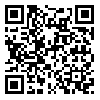BibTeX | RIS | EndNote | Medlars | ProCite | Reference Manager | RefWorks
Send citation to:
URL: http://rjms.iums.ac.ir/article-1-695-en.html
Background & Aim: Keloids and hypertrophic scars (HS) are proliferative dermal lesions with an overproduction of collagen and extracellular matrix which usually follow trauma to the skin. Keloid is a raised, erythematous, frequently pruritic or burning lesion which grows over normal tissues with no tendency to spontaneous regression while hypertrophic scar remains limited to the boundaries of the initial trauma and tends to regress gradually. Keloid is more frequent in African and Asian descent. No definite cure has been found for this lesion and existing treatments have high rates of relapse. Understanding the pathophysiology of keloid is necessary for development of newer, more effective therapies. Recently it has been shown that Gli1 oncogene (expressed in several of the human tumors) is involved in the pathogenesis of keloid. The aim of the present study is to determine the expression of Gli1 protein in keloids and hypertrophic scars and to define the probable role of this oncogene in the pathogenesis of keloid. Patients & Method: In a cross-sectional study carried out between 2003 and 2005, paraffin-embedded formalin-fixed specimens with the diagnosis of keloid or HS were retrieved from the pathology archives of Rasoul-e Akram, Razi and Hazrat-e-Fatemeh hospitals and Iranian Dermatology Clinic. Clinical data were collected from patients’ records. Immunohistochemical staining with anti-Gli1 antibody(1:20) was performed on pretreated slides. The expression of Gli1 and the degree and intensity of positivity were compared between keloids and HS using Chi-square test. Results: A total of 28 specimens (12 HS, 16 keloids) were studied. The patients’ mean age was 37.8 years, including 13 females and 15 males. The most frequent site of keloid was auricle (31.25%) and the most common cause was surgery (25%). Immunohistochemical staining for Gli1 was positive for all of the keloids but only 25% of HS (p<0.01). The degree and intensity of positivity was significantly higher in keloids compared to HS (p<0.01). Conclusion: Gli1 oncogene is highly expressed in all of the keloids and might be involved in the pathogenesis of this lesion. With regard to these results, drugs that block the Gli1 pathway might be effective in the treatment of keloids. We recommend in vitro and in vivo studies to evaluate the efficacy of anti-Gli1 therapies on keloids.





